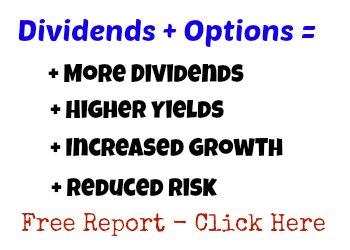Dividend Safety
When it comes to dividend safety, and safe dividend stocks, not all companies are created equal.
Ideally, the great advantage of dividend stock investing is the stability and increasing income streams it provides. But all that goes out the window when a company in which you've invested cuts its distribution.
In my opinion, when evaluating a potential investment, dividend safety is the factor you should consider first, even before calculating or estimating the dividend growth rate.
Of course, those tend to overlap. If you commit to investing in only high quality companies, you should have no trouble sleeping at night - your dividends are likely to remain safe and should continue to grow over time.
But for the impatient investor, future safety is often sacrificed for high yield in the present. Unfortunately, the future has a way of arriving more quickly than we anticipate. And as I've pointed out elsewhere, the best dividend stocks are rarely those with the highest current yields.
In fact, an exceptionally high dividend yield is often a very good indicator that a stock is not a safe dividend paying stock - or won't be for much longer.
Four Signs of Dividend Safety
The following video by Morningstar's Josh Peters is from October 2008 during the market meltdown, but remains timely.
Peters takes a fundamental analysis view of evaluating the safety of a dividend. It's a solid piece and worth a viewing.
Here's the quick version - the four factors Peters advocates analyzing are:
- Dividend Payout Ratio
- Earnings in Previous Downturns
- Debt to Capital Ratio
- Current Yield
The Common Sense Test
In addition to considering the factors above, I also advocate taking a skeptical, common sense approach. A good dose of healthy cynicism can go along way to protecting your portfolio.
Not only should you be wary of unusually high dividend yields, but you should also be suspicious of the estimates of a company's future earnings, especially earnings going out more than a year or two. After all, when was the last time analysts forecast a recession ahead of time (kind of defeats the purpose of forecasting, doesn't it)?
That's where common sense comes in. Always remember that the sustainability of a dividend relies on the sustainability of the earnings.
If, for example, as we've had to learn the hard way, a company's earnings are essentially the result of credit expansion, and have little to do with actual value creation, the dividends involved won't have much staying power once credit gets more scarce or expensive.
So don't fall for the common trap of investing in a mediocre (or worse) stock and then rationalizing afterwards about what a quality investment it is. Ask the hard questions ahead of time. And one of those questions is how secure the dividend is. Whether the current yield is 2% or 12%, that's a question you really need to ask.
Personally, I try to invest in only those companies that I deem would be the very last ones to die off in the event of a severe depression, nuclear war, a catastrophic meteorite strike, or a full scale alien invasion.
That way, ideally, and short of any of those occurrences, the safety of my dividends is not something I should ever have to worry about.
Related Articles and Resources:
Create Your Own Dividend Reinvestment Program
Dividend Reinvestment Plans: A Leveraged Investing Alternative
High Dividend Stocks and Option Trading
Dividend Growth Investing: Why It's Superior To Growth Investing
Tweet
Follow @LeveragedInvest

>> The Complete Guide to Selling Puts (Best Put Selling Resource on the Web)
>> Constructing Multiple Lines of Defense Into Your Put Selling Trades (How to Safely Sell Options for High Yield Income in Any Market Environment)
Option Trading and Duration Series
Part 1 >> Best Durations When Buying or Selling Options (Updated Article)
Part 2 >> The Sweet Spot Expiration Date When Selling Options
Part 3 >> Pros and Cons of Selling Weekly Options
>> Comprehensive Guide to Selling Puts on Margin
Selling Puts and Earnings Series
>> Why Bear Markets Don't Matter When You Own a Great Business (Updated Article)
Part 1 >> Selling Puts Into Earnings
Part 2 >> How to Use Earnings to Manage and Repair a Short Put Trade
Part 3 >> Selling Puts and the Earnings Calendar (Weird but Important Tip)
Mastering the Psychology of the Stock Market Series
Part 1 >> Myth of Efficient Market Hypothesis
Part 2 >> Myth of Smart Money
Part 3 >> Psychology of Secular Bull and Bear Markets
Part 4 >> How to Know When a Stock Bubble is About to Pop



